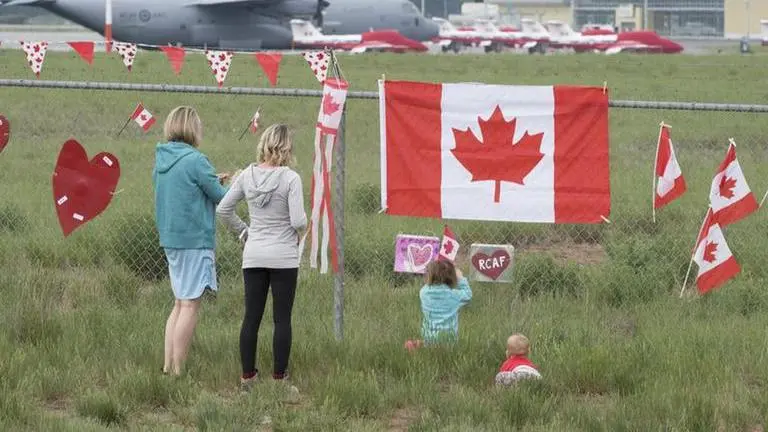Updated 19 May 2020 at 05:06 IST
Officer calls Snowbirds crash 'nightmare' as probe begins
A team of military investigators arrived in British Columbia on Monday to begin searching for answers into a deadly Snowbirds jet crash, which the aerobatic team’s commander described as a confluence of “worst-case scenarios, and it became our absolute worst nightmare.”
- World News
- 2 min read

A team of military investigators arrived in British Columbia on Monday to begin searching for answers into a deadly Snowbirds jet crash, which the aerobatic team’s commander described as a confluence of “worst-case scenarios, and it became our absolute worst nightmare.”
The eight-member flight investigation team was deployed from Ottawa to Kamloops, where one of the Snowbirds’ Tutor jets went down shortly after takeoff. The Snowbirds had been in the midst of a cross-country tour aimed at boosting morale during the COVID-19 pandemic.
One Canadian Armed Forces member, Capt. Jennifer Casey, a spokesperson, was killed while another, Capt. Richard MacDougall, who was piloting the aircraft, sustained serious but non-life threatening injuries.
During a news conference at 15 Wing Moose Jaw in Saskatchewan, where the Snowbirds are based, team commander Lt. Col. Mike French said the cross-country tour known as Operation Inspiration has been suspended while the team’s Tutor jets are subject to an “operational pause.”
Advertisement
French would not speculate on the cause of the crash, but insisted that safety is the Snowbirds’ “No. 1 priority.” He added that each aircraft is torn down and rebuilt about every two years and subject to regular maintenance and checks prior to every flight.
The crash was actually the second for the Snowbirds since October and the second involving a Royal Canadian Air Force aircraft in as many months after a Cyclone helicopter went down in the Ionian Sea on April 29, killing all six people on board.
Advertisement
The Snowbird jet crashed into a residential neighborhood in Kamloops. Nobody on the ground was injured.
“Certainly it’s an engine loss,” said retired chief of the defense staff Tom Lawson, who spent most of his military career flying fighter jets.
“You trade off your speed — whatever little bit you were able to build up — for altitude. It’s not so you can think of what to do next. It’s so you can eject at a safe altitude. It’s called zoom and boom.”
Retired air force commander Andre Deschamps echoed that assessment, saying videos of the incident suggest the Tutor experienced an engine compressor stall. Such stalls are the result of airflow into an plane’s engine being disrupted, causing dramatic power loss.
Published By : Associated Press Television News
Published On: 19 May 2020 at 05:06 IST
